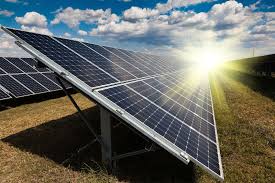As global energy consumption continues to rise, the quest for sustainable and renewable energy sources has become more pressing than ever. Among these sources, solar energy stands out as one of the most accessible and efficient options available today. Solar panels, in particular, harness the sun’s energy to generate electricity. Understanding the energy chain for solar panels is essential for anyone interested in harnessing solar power, whether for residential use or larger-scale applications. This article will delve into the intricacies of how solar energy is captured, converted, and utilized, providing a comprehensive overview of the energy chain involved in solar panels.
The Basics of Solar Energy
Solar energy is generated from the sun’s radiation. The sun emits an enormous amount of energy, which can be converted into usable electricity when captured by solar panels. The two main categories of solar panels are photovoltaic (PV) panels and solar thermal systems. PV panels convert sunlight directly into electricity, while solar thermal panels use sunlight to heat a fluid that, in turn, generates electricity. This article will focus primarily on photovoltaic panels, as they are the most commonly used for generating electricity for homes and businesses.
The Energy Chain in Solar Panels
Understanding the energy chain for solar panels involves several key stages: sunlight absorption, energy conversion, electricity generation, and electricity utilization. Let’s break down each step in detail.
1. Sunlight Absorption
The journey of solar energy begins when sunlight strikes the photovoltaic panels. These panels are made up of numerous solar cells, typically constructed from silicon, which is a semiconductor material. When sunlight hits the solar cells, it excites the electrons in the silicon, causing them to dislodge from their atoms. This process is known as the “photovoltaic effect.”
2. Energy Conversion
Once the electrons are freed by sunlight, they begin to flow through the solar cell. The design of the solar cell includes layers that create an electric field. This electric field encourages the flow of electrons in a specific direction, generating direct current (DC) electricity. However, most household and commercial appliances operate on alternating current (AC) power. Therefore, the DC electricity must be converted into AC electricity to be usable.
3. Inverters and Electricity Generation
Inverters play a crucial role in the energy chain of solar panels. They convert the DC electricity generated by the solar cells into AC electricity. The inverter not only changes the current type but also ensures that the electricity is generated at the appropriate voltage and frequency for home use. There are different types of inverters, including string inverters, microinverters, and power optimizers, each offering unique advantages based on the specific needs of the installation.
4. Electricity Utilization
Once the electricity has been converted into AC form, it can be used to power household appliances, lighting, heating systems, and other electrical devices. Any excess electricity that the solar panels generate can be fed back into the grid, depending on the setup of the solar power system and local regulations. Many homeowners opt for net metering agreements with their utility companies, allowing them to receive credits for surplus energy that is returned to the grid.
5. Energy Storage (Optional)
In scenarios where energy storage is desired, such as in off-grid systems or for increased energy independence, batteries can be integrated into the solar power setup. These batteries store excess energy generated during peak sunlight hours for later use, particularly during the evening or on cloudy days. Energy storage systems add another layer to the energy chain and enhance the reliability of solar power.
6. Monitoring and System Optimization
Modern solar power systems often include monitoring technologies that allow users to track their energy production and consumption in real-time. These systems can provide insights on efficiency and performance, helping users identify any issues that may arise and optimize their system for maximum effectiveness.
Conclusion
Understanding the energy chain for solar panels is integral to appreciating how solar energy works and the value it adds to our lives. From the moment sunlight is absorbed by solar cells to the point where electricity is utilized in our homes, each step is crucial for effective energy conversion. As technology advances, solar energy solutions are becoming more efficient and integrated into our daily lives, providing a sustainable alternative to fossil fuels and contributing to a cleaner planet.
Frequently Asked Questions (FAQs)
Q1: How much energy can a solar panel produce?
A: The energy production of a solar panel depends on its size, efficiency, and the amount of sunlight it receives. On average, a typical residential solar panel can generate between 250 to 400 watts of electricity under ideal conditions.
Q2: What advantages does solar energy offer?
A: Solar energy is renewable, reduces electricity bills, lowers carbon footprint, and can increase property value. Additionally, with advancements in technology, solar energy systems are becoming more affordable and efficient.
Q3: How long do solar panels last?
A: Most solar panels have a lifespan of 25 to 30 years. Manufacturers typically provide warranties that guarantee at least 80% of the panel’s original efficiency over that period.
Q4: Do solar panels work in cloudy weather?
A: Yes, solar panels can still generate electricity in cloudy conditions, although their efficiency may be reduced compared to bright, sunny days. Solar panels can capture indirect sunlight and diffuse light during overcast weather.
Q5: Can I power my entire home with solar energy?
A: Yes, it is possible to power your entire home with solar energy, depending on the size of your solar system and your energy consumption. Many homeowners complement their solar systems with energy storage solutions for complete energy independence.
By understanding the energy chain behind solar panels, individuals and businesses can make informed decisions about adopting this renewable energy source and contribute to a more sustainable future.



